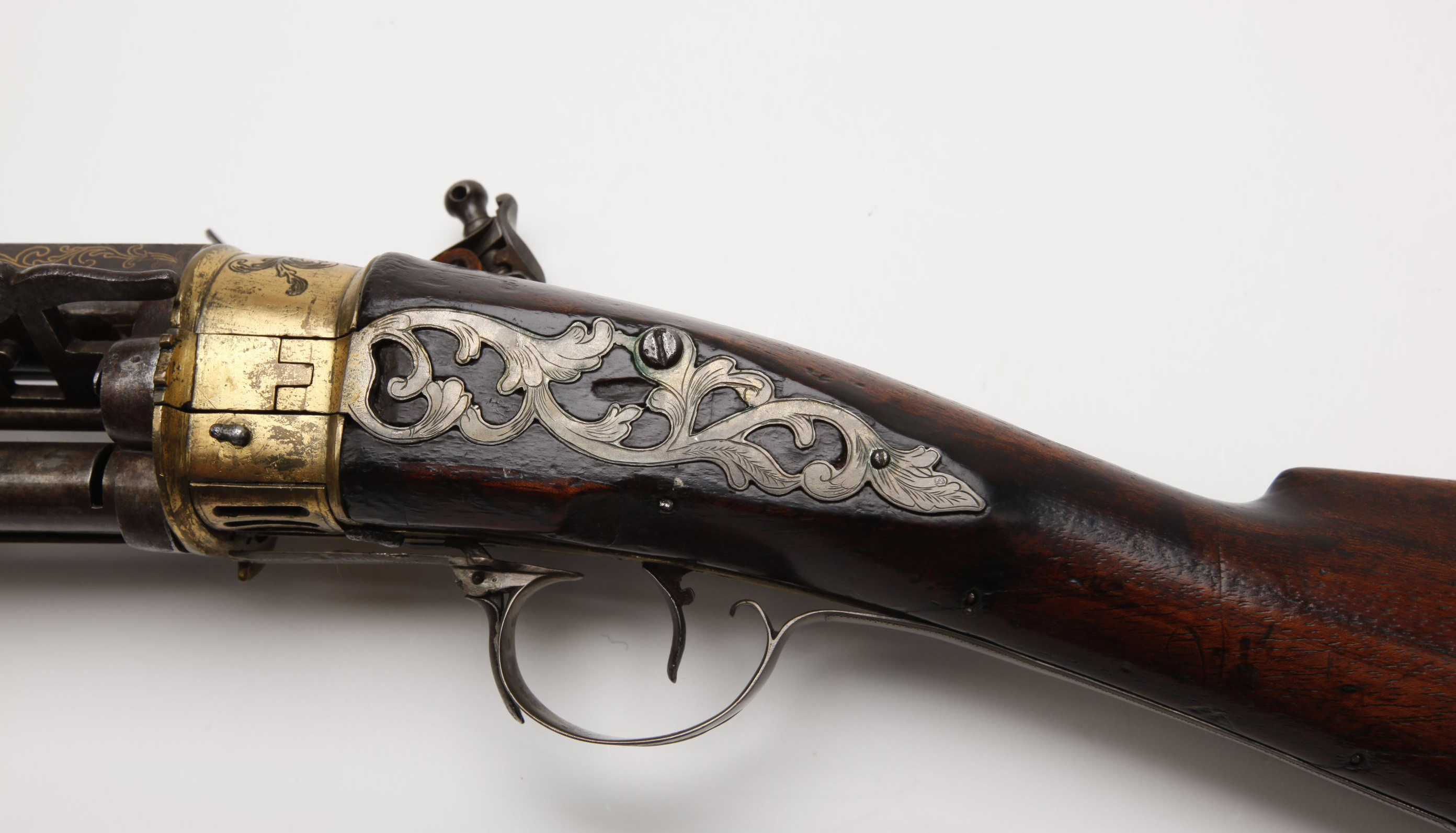Gallery

1 of 1
French Persian Repeating Flintlock Musket
The need to prime the pan with gunpowder for each shot made the development of repeating flintlocks nearly impossible although some tried, as with this elaborate French-Persian repeating musket...
Read more here

1 of 1
Ferdi Furwith Tube Lock Percussion Rifle
Before the percussion cap was perfected, other percussion systems were tried, such as this tube lock rifle by Furwith...
Read more here
Read more here

1 of 1
Colt Special Model 1861 Contract Rifle-Musket
The perfection of an effective percussion cap, as used on this Colt Model 1861 Rifle-Musket, greatly simplified loading and eventually led to the development of effective repeaters.
Read more here
Read more here

 More Like This From Around The NRA
More Like This From Around The NRA



